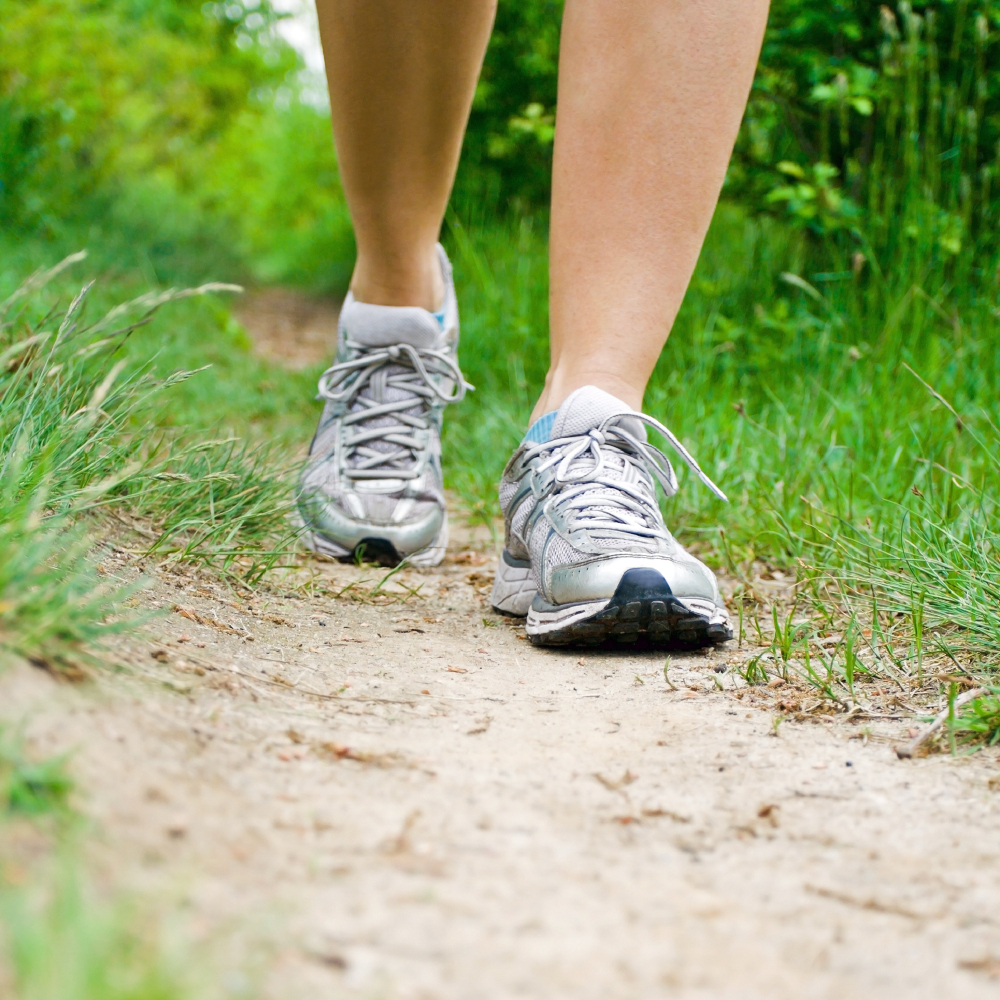With May being National Walking Month, Nordic Walking UK expert and author of ' The Complete Guide to Nordic Walking', Gill Stewart, reveals how to walk your way to better health this summer.

Get walking today!
Walking is a fantastic way to get fit, especially for those embarking on a new fitness regime. However, in these days where people want fast results and are time poor, it often gets overlooked in favour of more 'gruelling' exercise choices. But a well put together walking plan will, in fact, produce faster results and is more likely to lead to a sustained lifestyle change than a more rigorous regime.
Comfort is key
Prepare your body well with a gentle warm up and make sure you are dressed for the outdoors, paying special attention to your footwear. Lightweight, flexible soled trainers are best for fitness walking.
Know your limits
You would not take up swimming and attempt the channel on day one, so if you have not walked over a mile in a long time it's best to not attempt five straight off. In short, listen to your body and build up mileage gradually, taking time to monitor how you feel at every stage of your walk.
Measure, Record and Increase!
I call this an MRI scan! No need to stop enjoying a walk or get hung up on stats, simply train yourself to 'scan' your performance every once in a while. You can choose to measure steps, speed or distance (a simple pedometer or tracking app like Mapmywalk will help with this), or even how far you manage on a certain route. Whatever you choose to measure you must learn to record it and use it in order to add progression to your walks. If time is limited, pay more attention to increasing speed and difficulty.
Walk effectively
Don't fall into the trap of hunching your shoulders and wiggling like a race walker! Here's a step by step guide to walking well:
- Take time to ensure you start out with good posture and use this as a constant guide as to how well you are moving as you begin to work harder.
- Walk naturally swinging your arms further behind you than normal and bend them slightly as they come forward, taking the hands towards the middle in a relaxed motion.
- As you stride forward allow the lead foot to touch the ground at the heel rather than the mid foot and then take the weight onto the mid foot and then up onto the toes as you prepare to change legs. This is called rolling through the foot and will maximise the use of your leg muscles.
- Try not to clench your fists or take vigorous steps, you should be taking controlled, longer but not overstretched strides, which should not affect your posture at all.
- If you feel compelled to lean forward or rock your upper body, slow down and adjust your stride until you are able to walk with good, relaxed posture again. It may not seem as 'tough' but by perfecting technique you are actually working the body more effectively and you will begin to feel this too.
Add some oomph!
Walking is fantastic cardiovascular exercise, however if weight loss is your goal, it helps to add some resistance work to your regime too. Resistance exercise (weight training) helps to build lean muscle tissue which helps with toning but also increases your body's ability to utilise calories effectively. Adding resistance work to a walk can be done in a number of ways:
- Tone the arms and add resistance by carrying hand weights or using the Smovey Vibroswings which have the added benefit of vibration with every swing!
- For ultimate toning and calorific benefits, Nordic walking is the most effective outdoor workout as it works 90% of the major muscles and is as effective as being on a cross trainer machine in the gym, but a lot more fun. Using Nordic walking poles requires practice but once you have mastered it, you will feel lighter on your feet, energised and toned. It also improves posture and is great for those with neck, back or knee issues.
- You can also add some basic exercises to your walks such as using park benches for arm dips or adding lunges at intervals along the way.
- Mix up the speed you walk; short fast bursts mixed with longer slower paced walks will have a faster training effect than sticking to the same pace all the time. Use markers like trees or signposts and set yourself some 'interval' goals.
- Finally, don't forget HILLS! The simplest way to make a walk harder is to include some inclines. Use them as a workout factor and once again, select a mix of long gradual climbs and short steep ones.
Join a walking group. Ideally, join a walking group with a qualified instructor who will push you harder and add the elements above without you even realising!
'The Complete Guide to Nordic Walking' contains information on walking well plus workout ideas (Bloomsbury press). Gill and her team have trained over 3,000 qualified NWUK Instructors in the UK who can help you walk your way to fitness and offer regular group sessions - find your local one here www.nordicwalking.co.uk
Nordic walking poles and Smovey Vibroswings are available here http://nordicwalking.co.uk/store
Tagged in Health

